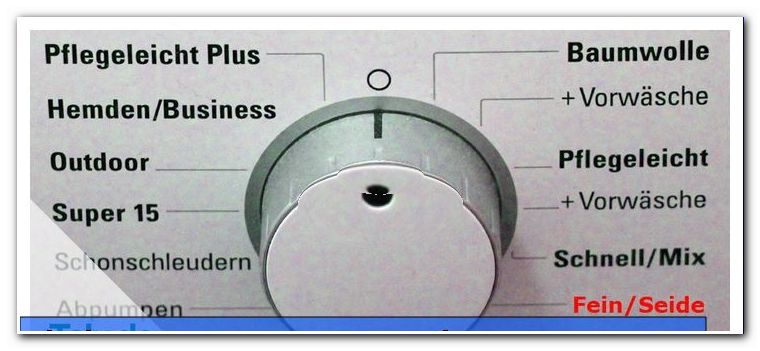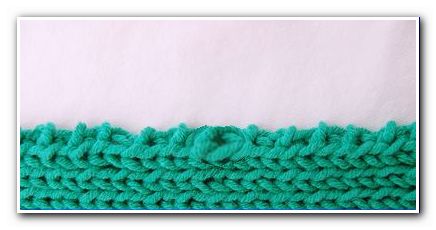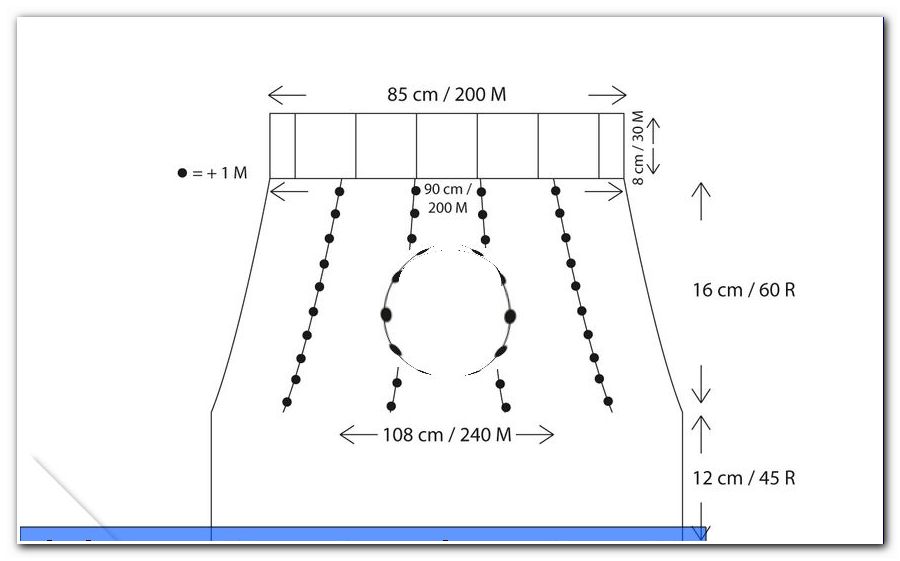Wash down and dry the duvet - so it stays fluffy!

- machine wash
- The preparations
- The wash cycle in the machine
- Drying in the condenser dryer
- Hand wash of down comforters
- The preparation
- The laundry by hand
- Drying on the drying rack
In winter, a cuddly bed is the favorite place of most people, no wonder the warming duvets are so popular. The bulking power of the feathers ensures that the blanket fits softly and smoothly to the body and releases its heat. Since the purchase is expensive, you should wash your duvet regularly to enjoy it for a long time.
At Grandma's time, there was always a warning to put down comforters in the washing machine or to even wash them. Today it is clear that was a nursery tale, because you can thoroughly wash your duvet in the machine and dry at home. With a few tricks and tricks, the blanket will be just as fluffy and warming after cleaning as it was before, only with a more pleasant smell. Down comforters should be washed approx. Every four years, with pillows one wash every two years is recommended. Even if the blanket looks visually clean, over the years dander, sweat particles and mites settle in it, which must be removed.
You need this for machine washing:
- Washing machine with at least six kilos capacity
- special down detergent or wool detergent
- 4 clean tennis balls
- condenser
- blotting paper
You need this for hand washing:
- Down washing or wool detergent
- large clothes horse with wings
- bathtub
- Bath thermometer
machine wash
The preparations
Before you can start washing, check the duvet for any cracks or damage. If a blanket has a crack and is then washed in the machine, the fabric continues to tear and the down is lost during the wash. This not only damages the ceiling, but also the washing machine, in the worst case both things are broken in the end. If you find a crack, you must close it with a tight seam before washing and wash the blanket in a cotton cover for safety reasons.
Run the washing program of your washing machine once to remove any remaining detergent. This would stick the sensitive down and cause the blanket not to return to its old form. Shake the blanket thoroughly again and then put it in the machine. A capacity of at least six kilos is required because otherwise sufficient water flow is guaranteed and the down could clump together.

Checklist for preparation:
- Rinse the washing machine in advance
- Check the ceiling for cracks
- Close defects with seam
- Thoroughly shake the cover again
The wash cycle in the machine
The duvet should be washed at a maximum of 40 degrees. If you are a house dust allergic, you can wash the blanket at a maximum of 60 degrees, but never more often than every four years. Dose the down or wool detergent exactly according to the manufacturer's instructions on the packaging. Too much detergent sticks the down and they lose their bulk. On the other hand, if you use too little detergent, the blanket will not be properly cleaned and there will still be dirt particles. 
Use the down comforter to insert the four tennis balls into the machine. These jump around during the wash cycle in the drum and ensure that the sensitive down do not stick together. Select the deluxe program unless your washing machine has a special down product program. In addition, set the highest spin speed so that a large part of the moisture is transported out of the ceiling before drying. Run the program of the washing machine through to the end and then start the rinsing process again. So excess detergent is rinsed from the ceiling. After rinsing a second time, you must also start the spin cycle again. Open the door immediately after washing so that mold does not form due to residual moisture.
Tip: There are special sized machines in the Laundromat if your washing machine does not have enough capacity.
Drying in the condenser dryer
Down duvets can be dried best and fastest in the condenser dryer. Take the blanket out of the washing machine and carry it as horizontally as possible to the dryer. Under no circumstances should you let the ceiling hang down, because then the down would slip and the ceiling deforms. Put the damp blanket directly in the dryer and add the tennis balls. The maximum drying temperature is 30 degrees. Let the dryer run for at least one hour and then finish the first drying process. Take out the blanket and shake well from all sides. Then place it horizontally on a table or drying rack and let it cool completely.

After the ceiling has cooled, the second drying process starts. Return the blanket and tennis balls to the condenser dryer and start the drying program a second time. Now let the program run for a maximum of twenty minutes and then remove the blanket again. Shake the down again and place the blanket flat on the clotheshorse. Tap the lying ceiling several times to soften the down. When the fabric and down have cooled down completely, repeat the process. About five to six dry cycles are required until the down is completely dry and puffy. You can test the success with a blotting paper. Press this firmly on the ceiling. If the paper still absorbs liquid, the blanket is not yet dry and the drying process must be repeated.
Tip: A blotter is found in any standard exercise book.
Hand wash of down comforters
The preparation
Check if your comforter may be damaged and sew cracks carefully. For the hand wash a bathtub is necessary in any case, since the ceiling requires sufficient space. Carefully clean the bathtub to remove any residual soap and shampoo. Let the water in and make sure that the temperature does not rise above 40 degrees. Check the temperature with a bathtub thermometer. Add the detergent exactly according to the dosing instructions, please do not dose too high. Shake the blanket vigorously before washing.

Checklist for preparation:
- Check the ceiling for cracks
- Supply of defects
- Carefully clean the bathtub
- First dissolve detergent in water, then add jacket
The laundry by hand
Lay the blanket in the water as much as possible, making sure that it is completely covered by water. Now begin to rub off visible dirt with your hand. For heavy soiling, the use of gall soap is useful. If you have largely removed the dirt, leave the duvet covered in the water for at least one hour. When the time is up, you can drain the water and rinse the ceiling vigorously with the shower head. Now let the clear water into the tub again and apply the blanket in it. Drain the water again and rinse thoroughly. Only when no more detergent residues flow out of the cover fabric, the laundry is completely completed. Please be careful not to wring the delicate blanket, as this could cause lasting damage to your down. Gently tap the excess water out of the ceiling.

Drying on the drying rack
Lay a thick layer of towels under the drying rack or place it outdoors. The blanket has absorbed a lot of water, which it loses during the drying time. Wear the blanket as horizontally as possible to the drying rack, avoid hanging parts, as otherwise the springs may slip. Carefully lay the blanket on the clotheshorse and gently pat it in shape again. In the first 24 hours on the drying rack, the blanket must be shaken and turned every two hours, otherwise mold may form in the area of the down. After 24 hours, it is sufficient if the blanket is turned and shaken every four hours. Make sure you have enough time to turn and shake the blanket every four hours for a period of about 10 days . This is the only way to prevent the sensitive down from sticking together.

Depending on the size of the blanket, it will take ten days for the drying process to finish. If you re-use the blanket too soon, mildew will appear between the feathers and the smell will be unpleasant. If the cover is actually dry, check also with the blotting paper test. Press a blotter on the blanket for several seconds to see if there is any moisture left. If so, the blanket must remain on the clotheshorse for at least another 24 hours.
Tips for quick readers:
machine wash
- Rinse washing machine at idle
- Add down duvet with tennis balls
- Maximum temperature 40 degrees (allergy 60 degrees)
- Start fine or wool washing program
- set maximum spin speed
- Put tennis balls and blanket in dryer
- five to six dry processes needed
Handwash
- Take breaks between drying tracks
- Bathtub for hand wash absolutely necessary
- Water temperature maximum 40 degrees
- Dampen down detergent as indicated
- Soak blanket in water for one hour
- rinse thoroughly with clean water
- Carry blanket horizontally on tumble dryer
- shake and turn every two hours




